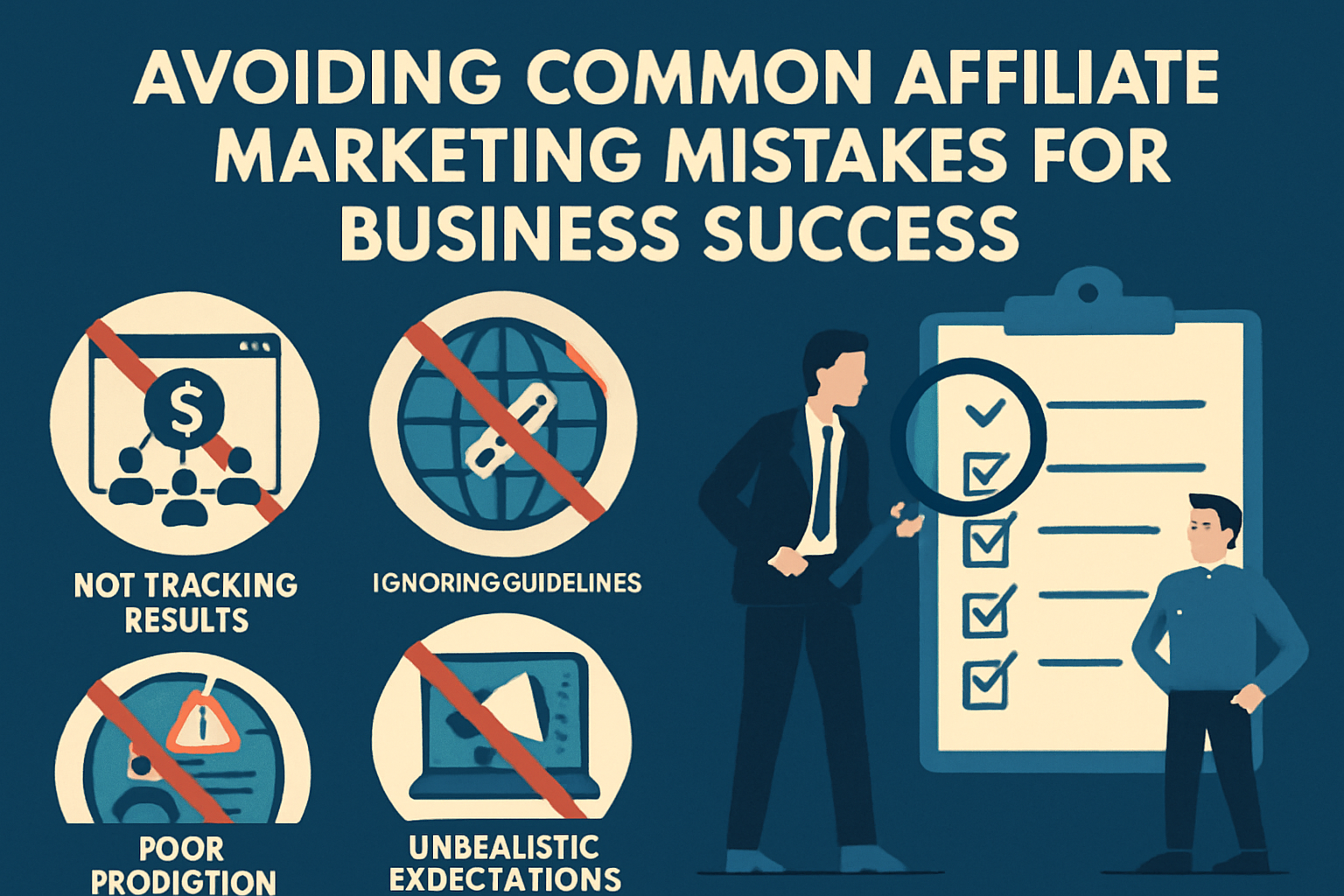In the dynamic realm of digital commerce, crafting a winning affiliate marketing strategy has become indispensable for businesses aiming to scale efficiently and cost-effectively. This approach leverages the power of partnerships, connecting brands with affiliates who act as ambassadors, channeling trust and authority directly to targeted audiences. Unlike traditional advertising, which often entails upfront costs and uncertain returns, affiliate marketing offers a performance-driven model, ensuring businesses only invest in concrete results such as sales or leads. As consumer behavior and technology evolve rapidly in 2025, effective affiliate strategies must be agile, data-informed, and intimately tied to a brand’s unique positioning.
Key to success in this field is understanding the diverse affiliate networks like Amazon Associates, ClickBank, and ShareASale, each offering unique opportunities and niche specializations. Strategic selection and nurturing of affiliates—ranging from influencers and bloggers to coupon sites and product reviewers—enable companies to broaden their audiences, boost credibility, and enhance conversions without excessive overhead. Furthermore, modern techniques incorporate robust tracking technologies, real-time analytics, and personalized content, ensuring campaigns are optimized continuously for maximum impact.
As competition intensifies, savvy marketers are also embracing innovative content creation, intelligent commission structures, and community building to foster loyalty among affiliates. These elements translate into carefully honed campaigns where both brands and partners flourish together. This comprehensive guide explores in depth how businesses can architect a thriving affiliate marketing ecosystem, learning from proven strategies, avoiding common pitfalls, and harnessing current tools to unlock sustainable growth and revenue potential in today’s digital landscape.
Understanding the Fundamentals of Affiliate Marketing Strategy and Its Core Benefits
Affiliate marketing is a collaborative promotional model where businesses work symbiotically with partners—affiliates—who endorse products or services in exchange for commissions on sales or leads they generate. Developing a solid affiliate marketing strategy means structuring this relationship to align with your business objectives, ensuring every activity propels measurable growth.
This discipline stands upon several pillars: identifying ideal affiliate profiles, crafting competitive incentives, providing quality promotional materials, and implementing meticulous tracking to assess performance. For instance, platforms like Rakuten Marketing, FlexOffers, and CJ Affiliate offer expansive networks and reliable tracking to streamline these mechanisms.
The advantages of an effective strategy are manifold:
- Cost-Effectiveness: Because payment is commission-based, businesses avoid significant upfront advertising expenditures and align spending with actual results.
- Extended Market Reach: Affiliates possess access to niche audiences otherwise difficult to penetrate, helping diversify customer bases.
- Enhanced Credibility: Consumers tend to trust recommendations from trusted affiliates such as bloggers or influencers more than generic ads.
- Scalability: Programs scale easily by onboarding additional affiliates, minimizing incremental costs.
- Performance Measurability: Real-time analytics provided by solutions like Impact or Awin enable data-driven decision-making.
| Affiliate Network | Unique Features | Best Suited For | Commission Model |
|---|---|---|---|
| Amazon Associates | Vast product inventory, trusted brand | Retailers, Physical Products | Pay-per-sale |
| ClickBank | Focus on digital products, high commissions | Info products, online courses | Pay-per-sale, pay-per-lead |
| ShareASale | Diverse merchant selection, robust reporting | Various industries | Pay-per-sale, pay-per-lead |
| Awin | Global reach, flexible integrations | Multiple sectors, including travel & finance | Pay-per-sale, hybrid models |
By recognizing these aspects and leveraging the right affiliate networks and partnerships, businesses can initiate powerful campaigns. For further guidance about selecting affiliate programs tailored to your niche and preferences, explore resources like How to Choose the Right Affiliate Program For You.

Building a High-Impact Affiliate Program: Steps to Develop and Optimize Your Strategy
A foundational step in creating a winning affiliate strategy is to define lucid, measurable objectives. Whether your aim is boosting sales, increasing web traffic, or expanding brand awareness, these targets drive the blueprint of your program.
Next, identify and recruit affiliates aligned with your brand ethos and audience demographics. This selective approach enhances authenticity and conversion potential. Platforms such as FlexOffers, ReferralCandy, or the eBay Partner Network facilitate discovery and onboarding of quality affiliates. Here’s an essential checklist for selecting ideal affiliates:
- Audience relevance and engagement metrics
- Consistency in content quality
- Reputation and alignment with brand values
- Ability to produce diverse promotional content
Follow this by structuring competitive commission models. Today’s top-performing affiliate programs often employ tiered incentives to reward rising performance levels, encouraging sustained effort from partners.
Equipping affiliates with compelling marketing resources is equally critical. High-resolution banners, product video demonstrations, email templates, and SEO-rich content empower affiliates to attract and convert more effectively. Providing clear branding guidelines ensures consistency, fostering a unified brand image across channels.
Robust tracking technology underpins successful affiliate programs. Reliable tools, including ShareASale or CJ Affiliate, enable seamless monitoring of clicks, conversions, and commissions, enabling optimization based on comprehensive data.
| Step | Description | Tools/Platforms |
|---|---|---|
| Define Goals | Set clear, measurable performance targets aligning with business objectives | Google Analytics, Custom KPIs dashboards |
| Select Affiliates | Recruit partners whose audiences and values align with your brand | FlexOffers, ReferralCandy, eBay Partner Network |
| Set Commissions | Design competitive and incentivized payouts to motivate affiliates | Impact, Awin, ShareASale |
| Create Marketing Materials | Develop affiliate-ready assets for consistent brand messaging | Canva, Adobe Creative Suite, Marketing teams |
| Track & Optimize | Analyze data to fine-tune campaigns for better ROI | CJ Affiliate, ShareASale, Impact |
Deep dive materials on structuring your efforts can be found in the ebook Creating Effective Content For Affiliate Marketing Success, which discusses content creation tuned for affiliate conversions, and Affiliate Marketing Strategies That Work in 2025 providing practical insights relevant to today’s market.
Leveraging Diverse Affiliate Channels: Examples of Successful Strategies Across Platforms
Successful brands utilize a range of affiliate channels tailored for different audience segments and marketing objectives. By diversifying, they mitigate risk and capitalize on unique audience engagement styles.
Consider the following proven channel strategies:
- Influencer Partnerships: Collaborate with creators who command trust in your niche. For instance, a lifestyle brand working with YouTube vloggers to showcase product demos while sharing affiliate links.
- Content Marketing via Bloggers: Partner with bloggers to craft in-depth reviews and tutorials that incorporate affiliate links driving organic traffic.
- Coupon and Deal Sites: Utilize platforms targeting deal-seekers by offering exclusive promotions through affiliate links, often boosting conversions during special sales events.
- Email Campaign Affiliates: Affiliates with robust mailing lists distribute targeted promotions, enhancing personalized engagement, especially when leveraging email marketing insights (Email Marketing Ebook).
- Social Media Promotions: Harness Instagram, Facebook, and TikTok to deliver dynamic, visual product showcases with embedded affiliate codes or swipe-up links.
- Review and Comparison Websites: Affiliates provide detailed comparative content guiding potential buyers, increasing confidence and purchase likelihood.
| Affiliate Channel | Key Benefits | Example Scenario |
|---|---|---|
| Influencer Partnerships | Authentic endorsements, higher trust | Beauty influencer reviews a skincare product with affiliate links |
| Content Marketing | Long-term SEO benefits, evergreen content | Tech blogger writes “Best laptops for coders” article with affiliate links |
| Coupon Sites | Attracts price-sensitive shoppers | Fashion e-store offers exclusive discounts via deal websites |
| Email Campaigns | Personalized approach, targeted promotions | Travel blogger sends monthly deal newsletters featuring affiliate promos |
| Social Media | Engaging visuals, broad reach | Fitness influencer shares workout gear haul with swipe-up affiliate links |
Integrating multiple channels often requires using affiliate platforms capable of multi-channel tracking and comprehensive reporting, such as The Best Tools For Affiliate Marketers in 2025. This ensures uniformity in measurement and supports strategic decisions across diverse promotional outlets.
Strategies to Increase Affiliate Marketing Success: Relationship Building, Optimization, and Trend Adaptation
The strength of an affiliate marketing program depends on continuous engagement with affiliates, data-driven optimizations, and receptiveness to emerging industry trends. Here’s how to amplify your program’s effectiveness:
- Maintain Strong Relationships: Offer regular support, organize training webinars, and celebrate affiliate milestones to build loyalty.
- Experiment with Commission Models: Trial tier-based commissions or bonuses to incentivize peak performance.
- Optimize Content and Channels: Monitor click-through and conversion rates to identify top-performing content formats and mediums.
- Stay Updated on Compliance: Ensure all affiliate promotions follow legal standards like FTC disclosures to safeguard reputations.
- Embrace Mobile Optimization: Craft campaigns designed for seamless mobile experiences since many users access promotions via smartphones.
- Leverage Analytics Tools: Employ platforms that integrate analytics SaaS to provide granular insights on sales funnels and affiliate contributions (Analytics SaaS Sales Funnel).
| Success Factor | Actions | Impact |
|---|---|---|
| Relationship Management | Host webinars, provide personal feedback | Increased affiliate motivation and retention |
| Commission Experimentation | Implement tiered rewards and bonuses | Higher affiliate productivity and sales growth |
| Content Optimization | Test different promotional materials and platforms | Improved conversion rates and ROI |
| Legal Compliance | Educate affiliates on disclosure and data privacy | Reduced legal risk and boosted consumer trust |
| Mobile Optimization | Ensure mobile-friendly landing pages and links | Expanded reach among mobile users and higher engagement |
For more advanced approaches, exploring Boost Your Earnings With These Affiliate Marketing Techniques offers actionable insights into fine-tuning your campaigns and fostering resilient affiliate ecosystems.
Common Pitfalls in Affiliate Marketing Strategies and How to Avoid Them
Despite the potential for monumental success, affiliate programs can falter due to overlooked mistakes. A keen awareness of typical pitfalls is essential for sustainable results.
- Poor Affiliate Selection: Avoid affiliates whose values or audience mismatch your brand, which can confuse messaging and reduce conversions.
- Opaque Communication: Lack of transparency regarding terms, commission changes, or program rules can alienate affiliates.
- Ignoring Compliance: Missing FTC disclosure laws or other regulations risks legal consequences and brand damage.
- Neglecting Performance Analysis: Without data-driven refinements, programs stagnate, failing to capitalize on high-performers or correct underperforming tactics.
- Uncompetitive Commissions: Subpar incentives drive affiliates to competitors, reducing program reach and effectiveness.
- Weak Affiliate Relationships: Treating affiliates merely as transactional agents inhibits loyalty and long-term collaboration.
- One-Strategy Dependency: Overreliance on a single affiliate type or platform limits growth and misses diverse market segments.
| Common Mistake | Potential Impact | Prevention Strategy |
|---|---|---|
| Poor Affiliate Selection | Brand dilution, low conversions | Vet affiliates carefully; match brand values |
| Opaque Communication | Affiliate dissatisfaction, attrition | Maintain clear, transparent policies |
| Ignoring Compliance | Legal risks, loss of trust | Educate affiliates; monitor promotions |
| Neglecting Analysis | Poor ROI, wasted resources | Use analytics tools; optimize regularly |
| Uncompetitive Commissions | Low affiliate engagement | Research industry rates; implement tiers |
| Weak Relationships | Reduced motivation, churn | Engage affiliates consistently |
| One-Strategy Dependency | Missed opportunities | Diversify channel and affiliate types |
Understanding these setbacks and actively countering them through informed policies ensures your affiliate marketing initiatives are built on a resilient foundation. A valuable reference for turning pitfalls into opportunities is available at Common Mistakes to Avoid in Affiliate Marketing.

Frequently Asked Questions About Creating a Winning Affiliate Marketing Strategy
- What is the best way to choose the right affiliates for my program?
Focus on affiliates who match your brand’s audience and values. Assess their engagement levels and content relevance. Platforms like ShareASale or Rakuten Marketing can assist in finding suitable partners. - How can I ensure fair and competitive commissions?
Research industry benchmarks within your niche and offer commissions that motivate affiliates without undermining profitability. Consider tiered incentives to reward performance milestones. - Which affiliate marketing tools are essential in 2025?
Use tracking and analytics platforms such as Impact, CJ Affiliate, and Awin. Additionally, leverage content creation tools and collaboration platforms for efficient management. - How do I maintain compliance with regulations?
Educate affiliates about FTC disclosure guidelines and data protection laws. Provide templates for transparent disclaimers and monitor content regularly. - What strategies drive sustained affiliate engagement?
Build strong relationships through regular communication, training, recognition programs, and timely support. Create communities to foster collaboration among affiliates.


